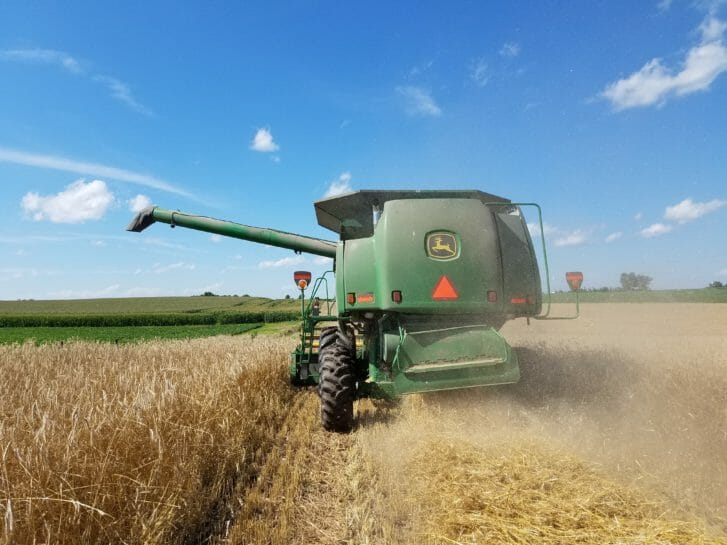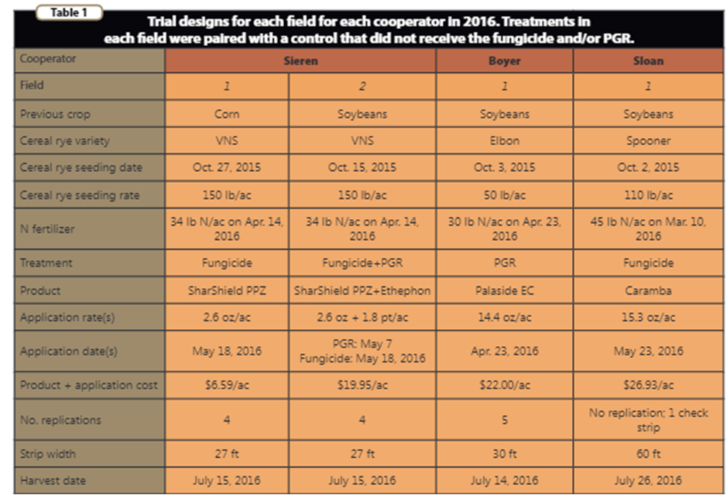RESEARCH REPORT: Fungicide and Plant Growth Regulator Effect on Cereal Rye Production
In recent years, a growing number of farmers have become interested in raising their own cereal rye seed to use as cover crop seed. However, fungal diseases and lodging can present challenges to raising small grain crops, like cereal rye, in Iowa. Warm and humid conditions during heading and grain fill periods are conducive to fungal pathogens of cereal rye; fungal infections can both reduce yields and germination rates of the resulting seed. Lodging of tall plants due to excessive stem growth makes harvesting difficult and can also reduce yield. To overcome these challenges, farmer-cooperators Tim Sieren, Jack Boyer and Dick Sloan investigated the use of fungicides and plant growth regulators on cereal rye seed crops to determine effects on yield and seed germination percentage.
You can read the full report here: Fungicide and Plant Growth Regulator Effect on Cereal Rye Production.

Tim Sieren harvests cereal rye on his farm near Keota in Washington County on July 15, 2016.
Tim Sieren used a fungicide in one field and paired a fungicide with a plant growth regulator in another field. Jack Boyer used a plant growth regulator in one field. And Dick Sloan applied fungicide to an entire field save for one check strip.

Among the Key Findings
- Across four fields at three farms, in only one instance were cereal rye seed yields and financial returns improved: when a fungicide was paired with a growth regulator.
- Germination percentage of harvested seed was generally greater than 90% regardless of farm or treatment.
Support for this project was provided by the Walton Family Foundation. The full report can be viewed here: Fungicide and Plant Growth Regulator Effect on Cereal Rye Production.
For more information about this study and other studies as part of PFI’s Cooperators’ Program, contact Stefan Gailans at stefan@practicalfarmers.org.
